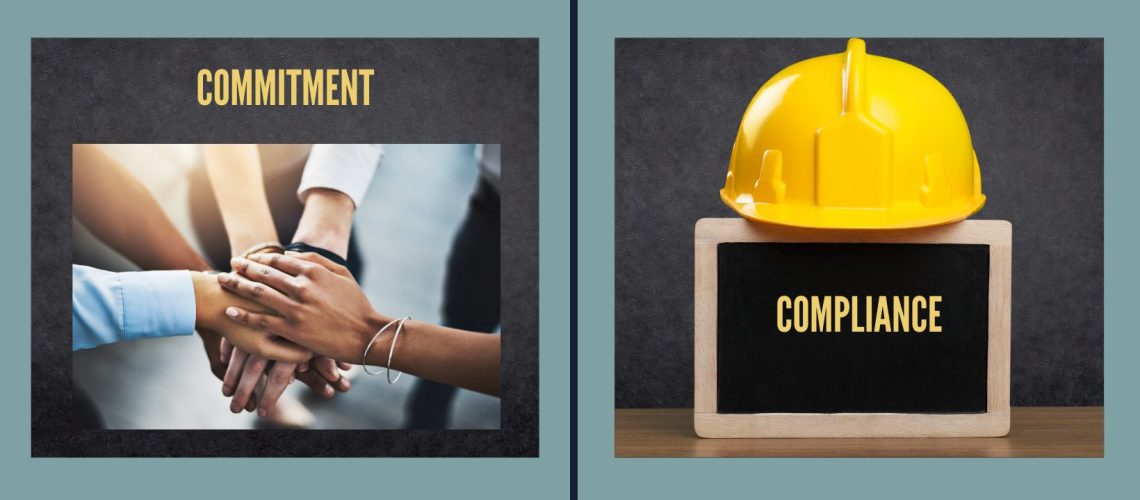Good leadership is about influencing the attitudes and behavior of a team.
Commitment and compliance are two different attitudes that employees can have toward their work and their organization.
Commitment
Commitment refers to an employee’s emotional attachment to their job and their willingness to go above and beyond what is expected of them. Committed employees are loyal to their organization, believe in its goals and values, and take ownership of their work. They are motivated by a sense of purpose and are more likely to take initiative, be innovative, and work collaboratively with their colleagues.
Compliance
Compliance, on the other hand, refers to an employee’s adherence to the rules and regulations set by their organization. Compliant employees follow the procedures and guidelines established by their company but may not necessarily have an emotional investment in their work. They may not go beyond what is explicitly required of them and may not show much initiative or creativity in their work.
Commitment or compliance?
While compliance is necessary for the smooth functioning of an organization, commitment is what drives long-term success. Committed employees are more likely to stay with their organization, work hard to achieve its goals, and contribute to a positive work environment. In contrast, employees who are merely compliant may be less engaged, less productive, and more likely to leave their job.
The Millennial generation is quickly becoming the largest segment of the workforce, good leaders should understand what they value and adapt their leadership style accordingly. It is difficult to make a generalization about what all millennials prefer in terms of commitment or compliance in the workforce, as individual preferences can vary greatly. However, studies have shown that millennials tend to place a high value on company culture, work-life balance, and opportunities for growth and development. They may be more likely to be committed to a company that aligns with their values and provides a sense of purpose, rather than just complying with rules and regulations.
How to foster commitment?
To foster commitment in the workplace, organizations can focus on creating a positive work culture, providing opportunities for growth and development, and recognizing and rewarding employees for their contributions. By doing so, they can create a workplace where employees feel valued and motivated to contribute to the organization’s success.
Here are some ways to foster commitment in modern workplaces:
- Establish a clear and inspiring vision: Communicate a clear and inspiring vision for the future of the organization that aligns with employees’ values and goals.
- Encourage open communication: Create a culture of open communication where employees feel comfortable sharing their ideas, concerns, and feedback.
- Empower employees: Provide employees with the tools, resources, and autonomy they need to take ownership of their work and make meaningful contributions to the organization.
- Recognize and reward achievements: Recognize and reward employees for their hard work, achievements, and contributions to the organization.
- Invest in employee development: Provide opportunities for employees to learn, grow, and develop their skills and career paths within the organization.
- Foster a positive work environment: Create a positive work environment that promotes collaboration, teamwork, and a sense of community.
Compliance is a forced effort whereas commitment is an active choice! A committed workforce is essential for organizations to achieve their goals, stay competitive, and thrive in the long term.
Do you need help identifying and developing effective leadership behaviors? Envision Global Leadership’s ALII-Map Enterprise assessment is a research-based, statistically valid instrument focused on influence behaviors, including emotional intelligence.
Our program provides mid- to senior-level workers with insight into the strength of their influence and helps organizations develop future leadership. Reach out today to learn more about our assessment and how you can invest in your organization’s future.

